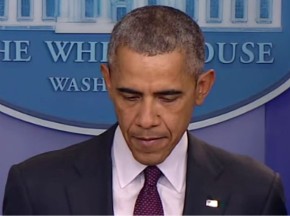Smart about guns

Responding to the murder last month of nine people at a community college in Oregon, President Obama displayed what has become his customary reaction to mass shootings: fury and frustration. Like many Americans, he is furious and frustrated that so many legislators lack the desire or political will to address gun violence. Americans seem to treat gun massacres as if they were as inevitable as the weather. “At some point, we as a country will have to reckon with the fact that this type of mass violence does not happen in other advanced countries,” Obama noted in June, after nine people were shot to death at a South Carolina church. But the point of reckoning is not expected anytime soon.
This absence of legislative energy does not close down all options for reform, however. The Industrial Areas Foundation, a network of community organizations and faith groups, has proposed some important steps that could be taken by the executive branch. The IAF calls on Obama to pressure gun manufacturers to alter their own practices so as to make gun sellers more responsible and guns themselves safer. The federal government has the clout to change manufacturers’ behavior, for it accounts for some 25 percent of gun revenues each year. With sales to states and municipalities added in, governments account for 40 percent of gun revenues.
Governments could use their purchasing power to stipulate that they will not buy guns from firms that don’t monitor the dealers who sell their guns. Lax procedures by some dealers allow guns to pass easily from a “straw buyer” to someone else, and these outlets are responsible for a disproportionate percentage of the guns used in crimes. Manufacturers should stop supplying such dealers—and governments should insist on it.




